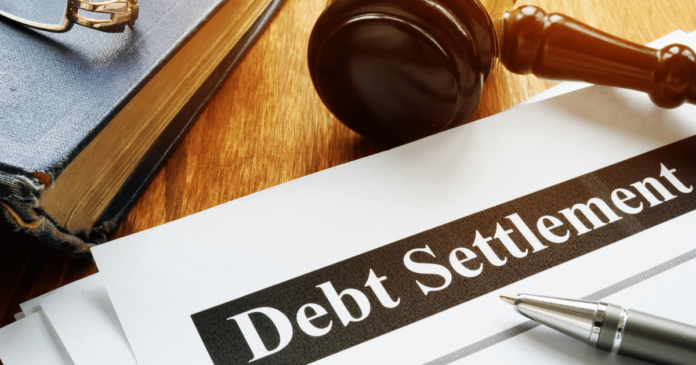In a financial landscape often marred by controversy, Wells Fargo has once again captured headlines with its latest settlement in 2024. As the dust begins to settle from previous scandals, this new agreement raises pivotal questions about accountability and consumer trust in banking institutions. What does this mean for customers who have faced challenges due to past practices? How will it reshape the way we view corporate responsibility moving forward? Join us as we dive into the key details of this landmark settlement and explore its far-reaching implications for both consumers and the banking industry at large. Buckle up—this is a story you won’t want to miss!
Introduction to the Wells Fargo Bank Settlement
Wells Fargo has found itself in the spotlight once again, but this time it’s not for a new banking product or service. Instead, it’s all about a significant settlement that could affect thousands of customers across the nation. The term “Wells Fargo Bank Settlement 2024” is making waves as people eagerly seek information on what this means for them and the broader implications for the banking industry.
As more details emerge, many are asking: What led to this landmark agreement? Who stands to benefit from it? And how will it shape Wells Fargo’s future operations? In an era where consumer trust is paramount, understanding these developments becomes crucial. Let’s delve into the background of this settlement and uncover everything you need to know about its potential impact on customers and stakeholders alike.
Background on the Misconduct and Claims Against Wells Fargo
Wells Fargo has faced significant scrutiny over the years due to various misconduct claims. The issues began surfacing prominently in 2016 when reports revealed that employees had opened millions of unauthorized accounts. This scandal raised profound questions about the bank’s internal practices and corporate culture.
Following this, several other allegations emerged. Customers claimed they were misled regarding fees and services tied to their accounts. The bank’s aggressive sales tactics led many to question its ethical standards in customer interactions.
Regulatory bodies stepped in, imposing hefty fines on Wells Fargo for these infractions. These penalties highlighted a pattern of neglect toward consumer rights and transparency—a troubling sign for an institution entrusted with public trust.
As customers grew increasingly aware of these malpractices, calls for accountability intensified, setting the stage for ongoing legal battles and settlements that would follow.
Details of the 2024 Settlement and Who is Eligible
The Wells Fargo Bank settlement in 2024 marks a significant turning point for the institution. The agreement comes as part of ongoing efforts to address allegations stemming from various fraudulent practices.
Eligible individuals include customers affected by unauthorized account openings and other deceptive banking activities. If you had an account with Wells Fargo between specific dates, you may qualify for compensation.
Details about the financial payouts are still being finalized, but initial estimates suggest substantial sums earmarked for impacted consumers. This is designed not only to provide restitution but also to promote accountability within the bank’s operations.
Moreover, those who submit claims will receive guidance on how to navigate this process effectively. Keeping track of communications from Wells Fargo is essential during this time.
Implications for Customers and the Banking Industry
The 2024 Wells Fargo Bank settlement carries significant implications for both customers and the broader banking industry. For consumers, it underscores the importance of vigilance regarding their financial institutions’ practices. This case serves as a reminder that accountability is essential in banking relationships.
Customers may experience changes in how banks approach service transparency and ethical standards. The settlement could prompt other financial institutions to reevaluate their own policies to avoid similar pitfalls.
For the banking sector, this situation highlights the growing demand for regulatory compliance and consumer protection measures. As trust becomes increasingly vital, banks may need to invest more resources into customer relations and ethical training.
This case also signals potential shifts in public perception of large banks. Customers might gravitate toward smaller or community-focused institutions that prioritize integrity over profits. A ripple effect could reshape competitive dynamics within the industry moving forward.
Steps for Customers to Claim Their Share of the Settlement
To claim your share of the Wells Fargo Bank settlement in 2024, start by gathering necessary documentation. This includes account statements and any correspondence related to claims against the bank.
Next, visit the official settlement website. It should provide a straightforward online form for submitting your claim. Ensure all information is accurate to avoid delays.
Once submitted, keep an eye on deadlines. Timelines are crucial in these processes.
You may also want to consult with legal experts if you have questions about eligibility or specific circumstances surrounding your account.
Lastly, stay updated through reliable news sources or community boards where other customers discuss their experiences and insights regarding the settlement process.
Potential Impact on Wells Fargo’s Reputation and Future Business Practices
The 2024 Wells Fargo bank settlement is set to reshape the institution’s public image. After years of various scandals, this settlement could either mark a turning point or further damage its reputation.
Customers and investors are watching closely. Trust is fragile, especially for a bank with such a tumultuous history. How Wells Fargo responds will speak volumes about its commitment to change.
Future business practices may also evolve in response to heightened scrutiny. The pressure for transparency and accountability has never been greater. Stakeholders expect more ethical behavior from financial institutions moving forward.
Moreover, regulatory bodies might impose stricter guidelines on operations. This could lead to comprehensive internal reforms aimed at restoring credibility.
Ultimately, how effectively Wells Fargo navigates these challenges will likely determine its standing in the competitive banking landscape for years to come.
Conclusion: Lessons Learned and What This Means for Consumers
The Wells Fargo Bank settlement in 2024 serves as a critical reminder of the importance of ethical practices within the banking industry. It underscores that customers have rights and deserve fair treatment from financial institutions.
For consumers, this situation highlights the need for vigilance. Always review account statements and question any discrepancies. Awareness can lead to better protection against potential misconduct by banks.
This settlement also raises questions about accountability. It encourages consumers to voice their concerns when they believe something is amiss. The outcome could foster a more transparent banking environment where customer trust is prioritized.
As we move forward, it’s essential for all parties involved—banks, regulators, and consumers—to learn from these events. This case sets a precedent that may influence future practices in banking compliance and customer relations. Ultimately, staying informed empowers customers to advocate for themselves effectively in an ever-evolving financial landscape.


